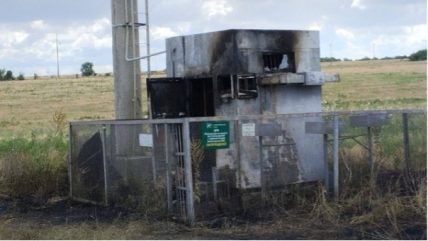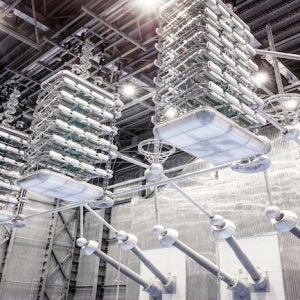
An external radiation monitoring station in the area around Zaporizhzhya nuclear power plant was destroyed by shelling and fire during last week, further reducing the effectiveness of its off-site capability to detect and measure any radioactive release during an emergency, IAEA director general Rafael Mariano Grossi said on 27 June in his latest report (Update 235) on the situation in Ukraine.
The ZNPP reported to the team of International Atomic Energy Agency experts at the site that it lost the connection to this monitoring station – located around 16 km south-west of the plant – on Monday 24 June. Owing to the security situation, the team was unable to access the location to confirm the damage.
Since early 2022, several radiation monitoring stations within a 30 km radius of the ZNPP have been out of service for varying periods of time owing to damage sustained as a result of the conflict. Four stations, more than a quarter of the pre-conflict total of 14, are currently unavailable.
The latest incident came just a few days after a 16 hour loss of power in the nearby city of Enerhodar – home to most ZNPP staff – had caused a temporary halt in the operation of some of the environmental radiological monitoring stations after the supply of back-up batteries was exhausted. “The functioning of off-site radiation monitoring equipment is an essential part of nuclear safety around the world. These systems are important for continuously monitoring radiation levels and, in the case of an emergency, for quickly assessing the ongoing and potential radiological impact and what protective actions may need to be taken,” director general Grossi said.
“The loss of one radiation monitoring station does not have a direct impact on safety at the ZNPP, but it forms part of a continuous erosion of a range of safety measures during the war that remains a deep source of concern,” he added.
Radiation monitoring is among the seven indispensable pillars described by the IAEA as essential to ensuring nuclear safety and security during an armed conflict, with pillar 6 stressing that “there must be effective on-site and off-site radiation monitoring systems, and emergency preparedness and response measures”.
The ZNPP is continuing to face other challenges related to nuclear safety and security during the conflict. On most days in recent weeks the IAEA experts on site continued to hear explosions in the distance.
They have also continued to closely monitor the cooling water situation at the site, a year after the destruction of the downstream Kakhovka dam forced the plant to look for alternative supplies of the water needed to cool its six reactors. As part of these efforts, it dug 11 groundwater wells last year that now provide sufficient water required for the current cold shutdown state of all units and its safety systems.
At the same time, the plant is trying to maintain the water level in its main cooling pond, a task that is especially challenging in hot summer weather, which has caused a decline of up to a quarter of the water it receives from other sources. Over the past year, the pond’s water level has declined by 1.5 metres to just over 15 metres.






